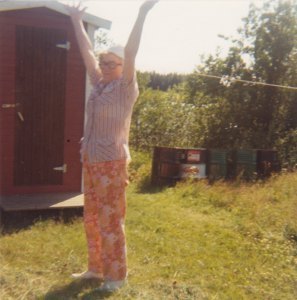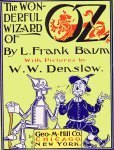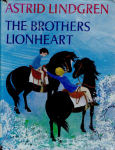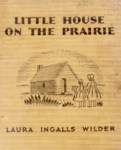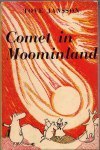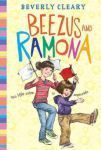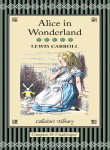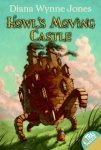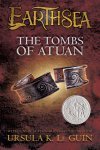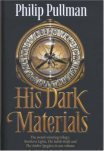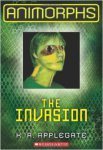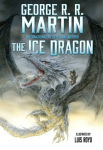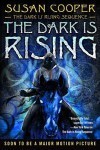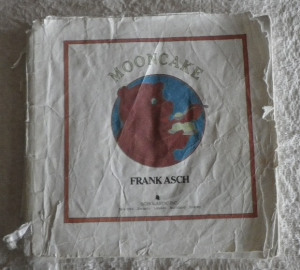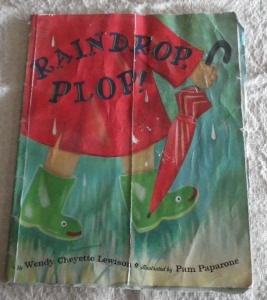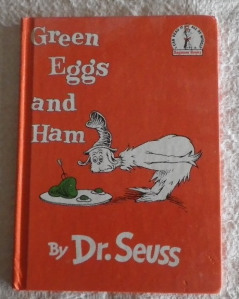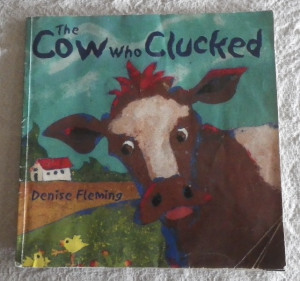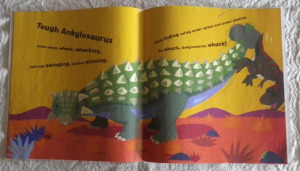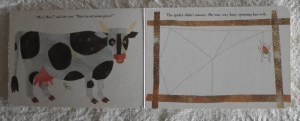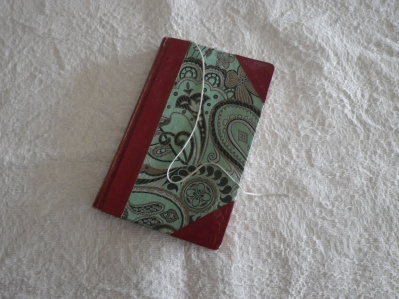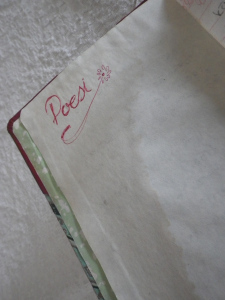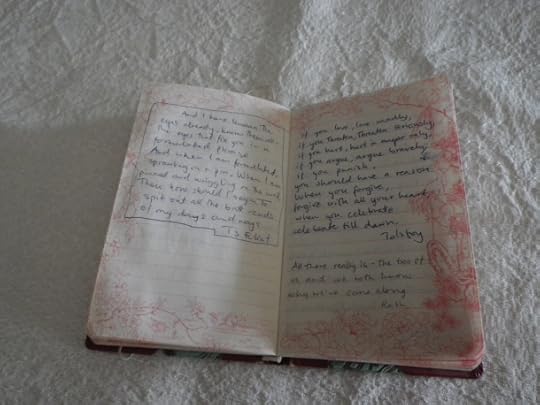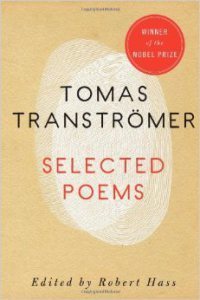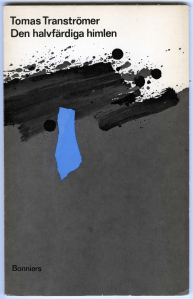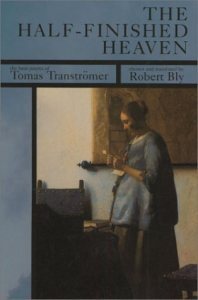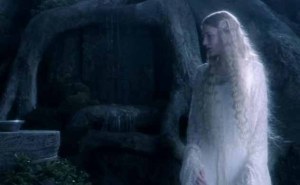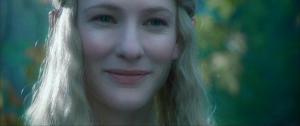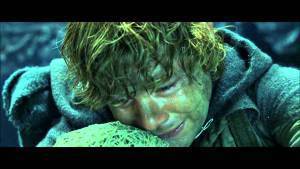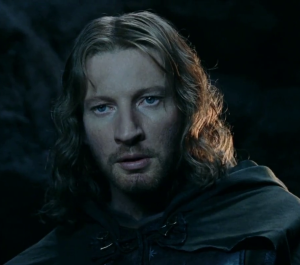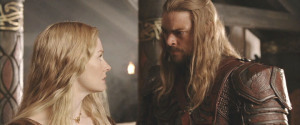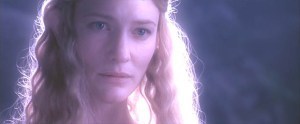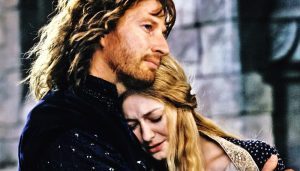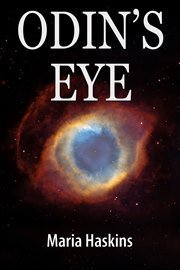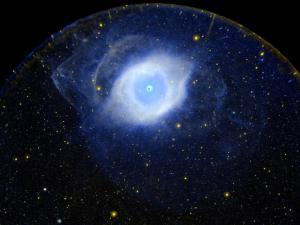Maria Haskins's Blog, page 61
April 3, 2015
New poetry
Once upon a time I used to write a lot of poetry. My first published book in Sweden was a collection of poetry, followed by another two collections. But that was a long time ago. However, these last few years I’ve been fiddling with words here and there, and lately I’ve been trying to gather up the ones I think are good enough. For what purpose? I’m not quite sure yet. But there is a collection slowly coming together, and here is one of the poems that I keep coming back to.
Grandmother
These hands, so tired, resting on the windowsill.
Early spring outside,
light blue sky:
that which does not seek the darkness,
but still finds it.
My memory fluttering
like a table cloth on the table outside,
like a curtain in the open window
like a white sheet drying on a line
held on by pegs and claws
ripping
but not yet.
Right now, there is only light and colour:
pinkredgold streaks of sun
woven into sky, fraying edges:
that which does not seek the darkness
but still finds it.
This time and place,
so frail and brittle,
blue veins, slender bones barely covered.
So little is left
so little of you
so little strength
so little time
just a little more to take.
Then night
cool and pale
like a freshly pressed sheet
white
pulled over skin.
These hands
rested on the loom for a little while:
life was spun,
wound into skeins,
woven into patterns.
Batten and lathe
yarn and warp
wool and linen
These hands
opened
as the eye closed:
that which does not seek the darkness
and does not find it.

April 2, 2015
Books to read for kids, young adults, and adults
I was a voracious reader as a child, and I still am, even though I read a lot less than I did back in those days. My husband and I read to our kids every night before bed, and they have also started reading by themselves – even though both of them still seem to enjoy the “read me a story!” aspect of bedtime. Since today is International Children’s Book Day, I’ve made a list of some of my favourite books, and some of my kids’ favourite books. Maybe I ought to call them all children’s books, except that I still enjoy reading most of them myself.
To quote Maurice Sendak:
I know so many adult writers who I would happily chop into pieces, who say, ‘… I think I’ll [write] a kiddy book!’ Stop pretending that there is such a thing as being able to sit down and write a book for a child: it is quite impossible. One simply writes books.
The Wonderful Wizard of Oz, by L. Frank Baum
This is one of my son’s all-time favorite books. My husband and I have read him the entire book many times, even when he was quite young and wasn’t the least bit interested in other chapter books.
Astrid Lindgren’s books
Some of Lindgren’s books, like Ronia, the Robber’s Daughter, and The Brothers Lionheart take place in fantasy worlds. Others, like The Adventures of Pippi Longstocking, and Karlson on the Roof blend fantasy elements and the real world. And many, like Lotta on Troublemaker Street, and Emil and the Great Escape take place in the real, Swedish world of the early 20th century. No matter what the setting, they’re all great reads for kids.
Little House on the Prairie books, by Laura Ingalls Wilder
I loved these books as a child, and few books have made me as hungry when I was reading them as Farmer Boy. They are such fun to read, even now when I’m an adult, so yes, there is a reason these books became classics.
The Hobbit & The Lord of the Rings, by J.R.R. Tolkien
Tolkien’s tale about Bilbo’s journey to find treasure and adventure is a great read for kids and adults (and it’s significantly less violent and complex than the tale as it’s told in the new movies!). For older kids, The Lord of the Rings trilogy is a more serious and more epic tale of good, evil, hobbits and a very great journey through Middle Earth to destroy the One Ring.
The Chronicles of Narnia, by C.S. Lewis
My daughter really loves the Narnia books, and her favourite is The Magician’s Nephew. She just thinks Uncle Andrew is hilarious (go figure!). The Lion, the Witch, and the Wardrobe is still my favourite in the series.
Mrs. Frisby and the Rats of NIMH, by Robert C. O’Brien
This is a wonderful tale about some very unusual rats, and how they end up helping mrs Frisby move her house, and save her family. It was made into a Disney movie as well, but (at least in my opinion) the book is far superior.
Comet in Moominland (and other Moomin-books), by Tove Jansson
Finland’s Tove Jansson created a very special and enchanting world in her stories about the Moomin-family and their life in Moomin-valley. If you haven’t checked out this particular fantasy-realm, it’s well worth a read.
Beezus and Ramona, by Beverly Cleary
This book, written in 1955, is absolutely delightful and at times hilariously, laugh-out-loud funny. Ramona is the quintessential trouble-making little sister, and Beezus is her suffering older sister. The stories about their trials and tribulations are so close to real life, and have a real ring of truth.
Alice’s Adventures in Wonderland, by Lewis Carroll
This is yet another classic story that never, ever gets old. Wonderfully crazy, kooky and weird, it still holds up as a captivating and thoroughly entertaining fantasy-romp.
Howl’s Moving Castle, by Diana Wynne Jones
My kids already loved Hayao Miyazaki’s movie version of this story, but the book is a masterpiece in its own way. The story and characters are rather different than in Miyazaki’s adaptation, but I think that the differences just makes the reading more interesting (my kids agreed). Sophie’s adventures after she’s cursed by the witch of the Waste, her encounter with the wizard Howl, and the fire demon Calcifer make for a great story to read aloud.
The Earthsea Quartet, by Ursula K. Le Guin
I’ve mentioned these books, and this writer, many times in my blog and it’s because they are amazing literature for kids and adults. I loved these books as a teenager, and they have stood the test of time: the prose is still exceptionally beautiful, the stories are gripping, and the characters original and believable in the midst of dragons and magic.
Red Shift, by Alan Garner
To quote the sales blurb: “Three separate stories, three utterly different lives, distant in time and yet strangely linked to a single place, the mysterious, looming outcrop known as Mow Cop, and a single object, the blunt head of a stone axe: all these come together in Alan Garner’s extraordinary Red Shift.” This book by is a twisting, trippy and hard-to-describe tale that winds through three different historical times, all set in the same place. It’s a story that I first read in my teens, but it has stayed with me over the years. Fantasy/history/poetry… there are shades of all three in this story.
His Dark Materials (The Golden Compass; The Subtle Knife; The Amber Spyglass), by Philip Pullman
This trilogy of fantasy books is probably better suited for kids age 11 and up (and I mean up to adult age!), but it is a fantastic story and a modern classic, as far as I’m concerned. Pullman has created a fantastic and very original world. Great for reading out loud, or by yourself.
The Animorphs series, by K.A. Applegate
This book series is a relatively new discovery in our home, even though the books were actually published several years ago. The story follows a group of kids who are fighting back against an alien invasion: they’ve all been given the power to “morph” into various animals. There are 54 books in all, so there’s a lot of ground to cover! My daughter is rather obsessed with these stories at the moment…
The Ice Dragon, by G.R.R. Martin
I’ve mentioned this book before. It’s written by the author of the “A Song of Ice And Fire”-books (made famous on TV as “Game of Thrones”), but this is a book for children, as well as young adults and adults. By that I mean that it’s a lot less brutal Martin’s books for adults. The Ice Dragon is beautifully told, beautifully illustrated, and very evocative. It’s not for the smallest children, but definitely a fantastic story. Be warned that the ending is bittersweet rather than a traditional “happy ever after”.
The The Hunger Games trilogy, by Suzanne Collins
A modern classic in young adult literature, this trilogy has become a very hot commodity because of the movie-franchise based on the books. Collins’ writing is captivating, but these books are not for younger kids: the story is dark and violent (and very well-written!). It’s a terrific story for older kids and adults.
The Dark Is Rising Sequence: Over Sea, Under Stone; The Dark Is Rising; Greenwitch; The Grey King; Silver on the Tree, by Susan Cooper
For kids in their tweens and teens, this series of fantasy books is a great read. The books weave together fantasy with bits of Celtic folklore, and strands of the King Arthur legend. The story is set in 1970s Britain, as well as ancient Britain, and other fantasy-realms in-between the worlds.

Great picture books to share with your kids
My kids are getting older, they turned 8 and 12 this year, and they’re no longer really into picture books. But for many years, we went through piles and bags and mountains of picture books (it’s a good thing we have access to a library!), and over the years I compiled various lists of some of the kids’ favourite titles. In honour of International Children’s Book Day, I’d like to share some of those titles here. The pictures are all of our own books, well-read and well-loved through the years.
Mooncake, by Frank Asch
This book was left behind by the previous owners of the house we live in. It was well-loved by their kids, and much loved by mine as well: it was read so much it eventually fell apart. It’s a simple but quite ingenious story about a bear who wants to get a taste of the moon. Beautifully written and illustrated.
Kidogo, by Anik McGrory
This book about a baby elephant is set on the African plain, and features lots of different animals from the area. It’s a great story for young kids!
Raindrop, Plop!, by Wendy Cheyette Lewison
This book includes counting (up to 10 and then backwards from 10), gorgeous illustrations and rhymes (can you tell my kids love rhymes?).
The Road to Mumbai, by Ruth Jeyaveeran
My daughter loved this story about a little girl who flies off in her bed, with her pet monkey to get to a monkey wedding in Mumbai. It’s a great fantasy tales for young kids and the descriptions of India are lovely as well.
Strega Nona, by Tomie dePaola
There are several books about Strega Nona, and old wise-woman living in a village in Calabria. My kids loved these stories, and the illustrations are fantastic too.
Green Eggs and Ham & The Cat in the Hat, by Dr. Seuss
My son was a huge fan of these books, and he was really into Dr. Seuss’ brand of humor. I still love reading Dr. Seuss: because the rhymes are so great and really flow.
Rain, by Manya Stojic.
This is a great book with very colorful and vivid illustrations, all about what happens when the rains arrive on an arid plain somewhere in Africa. My daughter loved this book when she was about 3, 4 years old.
Flotsam, David Wiesner
A really amazing picture book without any text to read, just some absolutely spectacular images that tell a fantastic story all on their own. Highly recommended!
The Cow Who Clucked, by Denise Fleming
The kids really enjoyed this story about the cow who loses her “moo” and tries to find it. The illustrations are beautiful and very detailed: there are lots of little things to find each time you read it!
Not a Stick, by Antoinette Portis
Even now, the kids get a kick out of this book. How many different things can a stick be? Well, a lot of things, let me tell you! Just not a stick.
Skunkdog, by Emily Jenkins
This book, about a dog without a sense of smell that ends up befriending a skunk, used to one of my daughter’s favorite reads. It’s a fun and actually rather touching story about how being different can make it tough to make friends, but that friendship can be found in unlikely places.
Stomp, Dinosaur, Stomp!, by Margaret Mayo and Alex Ayliffe
Dinosaurs and rhymes: two of my kids’ favorite things and thus a big hit in our house.
Wallace’s Lists, by Barbara Bottner
This is another great story about friendship, and about making friends with someone who might seem quite different from you. Wallace, who never does anything without a list, and Albert, who never plans ahead, end up having quite an adventure together.
Wag a Tail, by Lois Ehlert
My son fell in love with this book when he was starting to read. It’s mainly made up of fun, dynamic pictures with simple text, but I think he liked it because he it was easy and fun to read by himself. Silly dogs and lots of action on every page contributes to the fun as well.
The Girl Who Loved Wild Horses, by Paul Goble
This beautifully illustrated book tells a very original and captivating story about a young native American girl and her love of horses, and the horses that come to love her.
The Very Busy Spider & The Very Hungry Caterpillar, by Eric Carle
My kids had lots of favorite board books when they were younger, but these two books by Eric Carle (who is a genius of the genre) were always their top picks.
Read more about International Children’s Book Day.

April 1, 2015
My grandfather’s horses
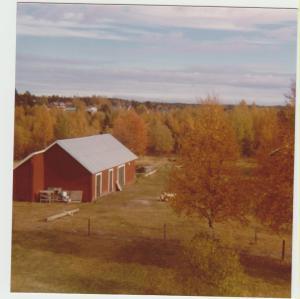 My grandparents’ house sits on top of a hill. Like so many other Swedish houses it is painted red with white trim.
My grandparents’ house sits on top of a hill. Like so many other Swedish houses it is painted red with white trim.
Just below the house, in a grassy field where wild strawberries and nettles grow in summer, is the stable. It is an old, sagging wooden building, also painted red. Looking down at the stable from the kitchen window I can almost see my grandfather walking down that slope like he used to: his broad back and rolling gait, his rough, strong hands swinging at his sides.
I remember those hands so well. My grandfather was a carpenter and several of his fingertips were missing, ground down just below the cuticles in an accident with an electric planer. Even now I have a hard time imagining how my grandfather, always such a quiet man, would have reacted to such pain.
My grandfather was a very good carpenter. He was also very good with horses. As a young man in the 1930s he drove a horse coach between the small villages in this part of northern Sweden, and through the years he almost always kept a horse of his own.
The horse I remember best is Prins, a Norwegian Fjord horse with a light blonde coat, spiky mane and a dark streak down his back. In the summers I spent a lot of my time with Prins, feeding him carrots from grandmother’s garden, cleaning out his stall or just standing by the fence, brushing the flies off his back and legs with a birch branch.
Prins was a good working horse. In the spring he would help with the plowing and harrowing, preparing grandfather’s small potato fields where we grew our annual supply of potatoes. And in the fall he would pull the cart loaded with potato crates to the underground storage cellar down the road.
Prins was also a very clever horse and would escape from his stall no matter how you tried to lock it. It was the same in the paddock: when he felt like it he would break down the wooden fence and go where the grass was presumably greener. Finally my grandfather installed an electric fence to stop him once and for all. Prins studied the thin wire for a few minutes before walking straight into it.
After the inevitable shock he settled down and kept his distance, seemingly resigned to his fate, but a few days later I watched as he lay down on his side next to the fence, legs kicking frantically, moving awkwardly along the ground. He was escaping once again, this time by scooting out under the wire.
One of my fondest Christmas memories is being pulled through the dark, bitterly cold Swedish December night over creaking snow and glistening ice in a sleigh drawn by Prins, bells jingling around his neck, torches flickering on the back of the sleigh and a warm sheepskin thrown over my knees.
Eventually, Prins’ fate was sealed by the cleverness that had helped him so many times in the past. One night he escaped yet again from his stall, but this time somebody had left the oat crate open. In the morning one of my cousins found Prins, lying on his side, sweating and breathing heavily, his belly swollen. When the vet arrived it was already too late – all he could do was end the pain. After that my grandfather didn’t get any more horses and the stable remained empty.
My grandfather has been dead for several years now. He died one spring, curled up like a baby in a hospital bed. The last time I saw him he was so thin I barely recognized him; there was no strength left in him and barely any life. I rested my cheek on his and felt the rough, gray stubble but I knew that even though I could feel him, he was not really there anymore, he was already somewhere else.
Three days later he was dead. My grandmother closed his eyes.
I didn’t feel his presence there in the hospital, but even now I sense him beside me as I walk down that slope from the red and white house to the stable, as I lift the padlock off the crooked door and enter.
Inside, it still smells of horses and hay but all that is left are a couple of leather halters, some jars of saddle soap and tins sticky with the tar used on the horses’ hooves. Here, in the doorway, is where the horses used to stand, waiting to be harnessed or groomed and right there, inside the creaking door, is a hole in the floor, its edges worn smooth: a narrow, oblong shape between two boards. The horses made this hole, wearing away at the wood with their iron-shod hooves over the years.
Looking at it now I remember being a small child, running barefoot over these warped wooden boards, bravely putting my toes into that very hole, half expecting mice or rats to start nibbling at me.
Lingering in the musty smells I test the hole with the toe of my boot now, and I think of all those horses through the years being led out here by my grandfather. I think of them standing here, impatiently scraping the same board in the same spot, slowly but surely carving out a small, and to most people indecipherable, inscription to remember them, my childhood and my grandfather by.
(This is a translation of a piece I wrote for the Swedish newspaper Norran.)

March 31, 2015
The thrill & embarrassment of finding an old notebook
I found an old notebook the other day. And when I say old, I really mean it: this is a notebook I used when I was in my teens. I wrote down short poems I had written, and quotes I liked from books and songs and movies. Kind of like a Facebook page or Tumblr blog these days I guess, except all done in pen and pencil and tucked away between the covers.
Reading my old poetry is 100% cringe-worthy. I can read my old poetry collections without suffering any embarrassment, but the poems in my notebook pre-dates all that and most of it is too precious and… well, I guess “lame“ is probably the word I’m looking for.
The quotes and short diary-notes I’ve written down in this notebook are more interesting to me now. There’s lots of poetry in there, most of it by Swedish authors, but also lines and verses from T.S. Eliot, Christina Rossetti, and William Blake too. There are also many “empowering” and “insightful” quotes, and many of those are still making the rounds on the internet. “Stick together, a circle has no behind.” “The world is a book. And they who stay at home read only the first page.” But also more original things (or so I’d like to think, anyway): quotes taken from Federico Garcia-Lorca, The Rigveda, Paul Verlaine, and warrior-songs from Native American tribes.
In one place, there are quotes by Tolstoy, Rush and T.S. Eliot on the very same page. I like that. It describes my brain both then and now quite well.
In fact, one of the things I can tell from this notebook, is that even though I am in many ways a very, very different person now than I was then, I can still feel part of that teenager inside my: she’s there, peering out from behind my other experiences (and wrinkles). She was less experienced, more sensitive to what the world thought of her, she agonized over things that shouldn’t have bothered her, and her poetry was definitely lacking… But she was me, she is me, and I am her, even though my edges have been worn down by time and life and the world, and even though the face looking back at me in the mirror looks a bit different than it did then.
And one thing is for sure: her handwriting was a whole lot better and more legible than mine.

March 27, 2015
Under tryck / Under pressure, by Tomas Tranströmer
Transtromer prefers still, pared-down arrangements that rely more on image and tone than, say, peculiarities of diction or references to local culture. The voice is typically calm yet weary, as if the lines were meant to be read after midnight, in an office from which everyone else had gone home. And his gift for metaphor is remarkable
(From: The New York Times, March 9, 2012)
Yes.
Under tryck
Den blå himlens motordån är starkt.
Vi är närvarande på en arbetsplats i darrning,
där havsdjupet plötsligt kan uppenbara sig –
snäckor och telefoner susar.
Det sköna hinner man bara se hastigt från sidan.
Den täta säden på åkern, många färger i en gul ström.
De oroliga skuggorna i mitt huvud dras dit.
De vill krypa in i säden och förvandlas till guld.
Mörkret faller. Vid midnatt går jag till sängs.
Den mindre båten sätts ut från den större båten.
Man är ensam på vattnet.
Samhällets mörka skrov driver allt längre bort.
/
Under Pressure
The blue sky’s engine-drone is deafening.
We’re living here on a shuddering work-site
where the ocean depths can suddenly open up –
shells and telephones hiss.
You can see beauty only from the side, hastily,
The dense grain on the field, many colours in a yellow stream.
The restless shadows in my head are drawn there.
They want to creep into the grain and turn to gold.
Darkness falls. At midnight I go to bed.
The smaller boat puts out from the larger boat.
You are alone on the water.
Society’s dark hull drifts further and further away.
Tomas Transtromer: Selected Poems, 1954-1986


RIP Tomas Tranströmer
Swedish poet Tomas Tranströmer has died. He won the Nobel Literature Prize in 2011, and when he won, the Swedish Academy said in the prize announcement: “through his condensed, translucent images, he gives us fresh access to reality”.
Others have praised his “elegant descriptions of long Swedish winters, the rhythm of the seasons and the palpable, atmospheric beauty of nature”.
Both statements are true.
Tranströmer’s poetry was translated into many languages and read all over the world. That’s quite an accomplishment for a poet, since poetry is probably the most difficult thing to truly translate successfully into another language: Edward Hirsch was right about that. Like the famous Robert Frost quote says: “Poetry is what gets lost in translation”.
Tranströmer’s poetry is achingly beautiful in Swedish, and yes, some of that beauty shines through even in translation. I read Tranströmer’s poetry the way I read all great poetry: not to understand it in the way you would understand a non-fiction text, but to understand it in the way that you understand a feeling, an emotion, or another person, even though you can’t fully explain that understanding in logical terms.
To me, poetry is much like music that way: you hear it, you feel it, you react to it, on a level that is not always easy to explain without sounding like the Swedish Academy making a Nobel Prize announcement…
Five of Tranströmer’s poems are available at nobelprize.org in both the original Swedish, and translated into English.
Den halvfärdiga himlen
Modlösheten avbryter sitt lopp.
Ångesten avbryter sitt lopp.
Gamen avbryter sin flykt.
Det ivriga ljuset rinner fram,
även spökena tar sig en klunk.
Och våra målningar kommer i dagen,
våra istidsateljéers röda djur.
Allting börjar se sig omkring.
Vi går i solen hundratals.
Var människa en halvöppen dörr
som leder till ett rum för alla.
Den oändliga marken under oss.
Vattnet lyser mellan träden.
Insjön är ett fönster mot jorden.
/
The Half-Finished Heaven
Despondency breaks off its course.
Anguish breaks off its course.
The vulture breaks off its flight.
The eager light streams out,
even the ghosts take a draught.
And our paintings see daylight,
our red beasts of the ice-age studios.
Everything begins to look around.
We walk in the sun in hundreds.
Each man is a half-open door
leading to a room for everyone.
The endless ground under us.
The water is shining among the trees.
The lake is a window into the earth.
The Half-Finished Heaven: The Best Poems of Tomas Transtromer

March 25, 2015
Reading Tolkien – some of my favourite bits of “The Lord of the Rings”
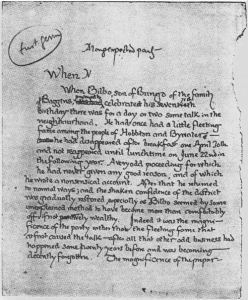
J.R.R. Tolkien’s original first page for Lord of the Rings, 1937.
At this point in my life I don’t even know how many times I’ve read Tolkien’s The Lord of the Rings. 20? 30? 40? Not sure. Not as many times as Christopher Lee (who apparently re-reads it every year), but still: quite a few times.
Even now I find new details and shades in the storyline every time I read it again, and I do have some favourite scenes, of course. Bits of story, parts of dialogue, certain descriptions and exchanges that shine just a bit brighter. So here, in honour of Tolkien Reading Day, are some of my favourite bits of The Lord of the Rings:
Galadriel’s song of Eldamar. The transition from the hope and joy of the first passage, to the wistful sadness and longing of the final lines, is one reason I love this poem so much. To me, it’s the best poetry Tolkien ever wrote.
I sang of leaves, of leaves of gold, and leaves of gold there grew:
Of wind I sang, a wind there came and in the branches blew.
Beyond the Sun, beyond the Moon, the foam was on the Sea,
And by the strand of Ilmarin there grew a golden Tree.
Beneath the stars of Ever-eve in Eldamar it shone,
In Eldamar beside the walls of Elven Tirion.
There long the golden leaves have grown upon the branching years,
While here beyond the Sundering Seas now fall the Elven-tears.
O Lórien! The Winter comes, the bare and leafless Day;
The leaves are falling in the stream, the River flows away.
O Lórien! Too long I have dwelt upon this Hither Shore
And in a fading crown have twined the golden elanor.
But if of ships I now should sing, what ship would come to me,
What ship would bear me ever back across so wide a Sea?”
Sam, describing Galadriel to Faramir:
“Beautiful she is, sir! Lovely! Sometimes like a great tree in flower, sometimes like a white daffadowndilly, small and slender like. Hard as diamonds, soft as moonlight. Warm as sunlight, cold as frost in the stars. Proud and far-off as a snow-mountain, and merry as any lass I ever saw with daisies in her hair at springtime.”
Sam, wondering what to do when he thinks Frodo has been killed by Shelob. The implication that Sam contemplates suicide here is heartbreaking, even though he quickly rejects the idea.
“It would not be worth while to leave his master for that. It would not bring him back. Nothing would. They had better both be dead together. And that too would be a lonely journey.
He looked on the bright point of the sword. He thought of the places behind where there was a black brink and an empty fall into nothingness. There was no escape that way. That was to do nothing, not even to grieve. That was not what he had set out to do.”
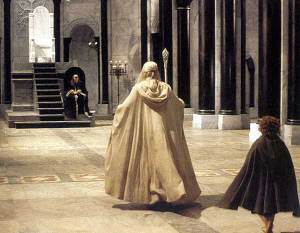 Gandalf getting sharp with Denethor, in The Return of the King. Feel the burn, Denethor!
Gandalf getting sharp with Denethor, in The Return of the King. Feel the burn, Denethor!
…the rule of no realm is mine, neither of Gondor nor any other, great or small. But all worthy things that are in peril as the world now stands, those are my care. And for my part, I shall not wholly fail of my task, though Gondor should perish, if anything passes through this night that can still grow fair or bear fruit and flower again in days to come. For I also am a steward. Did you not know?
Pippin, watching Faramir before the battle of Minas Tirith.
Proud and grave he stood for a moment as he spoke to the guard, and Pippin gazing at him saw how closely he resembled his brother Boromir… Yet suddenly for Faramir his heart was strangely moved with a feeling he had not known before. Here was one with an air of high nobility such as Aragorn at times revealed, less high perhaps, yet also less incalculable and remote: one of the Kings of Men born into a later time, but touched with the wisdom and sadness of the Elder Race. He knew now why Beregond spoke his name with love. He was a captain that men would follow, that he would follow, even under the shadow of the black wings.
Gandalf speaking of Eowyn, to Eomer. This wonderful quote shows that even though Tolkien didn’t create a lot of female characters, he did create some great ones, and he also understood women a lot better than many people seem to think.
My friend, you had horses, and deed of arms, and the free fields; but she, being born in the body of a maid, had a spirit and courage at least the match of yours. Yet she was doomed to wait upon an old man, whom she loved as a father, and watch him falling into a mean dishonoured dotage; and her part seemed to her more ignoble than that of the staff he leaned on.
Frodo speaking to Galadriel, after looking in Galadriel’s mirror. Anything with Galadriel gets top votes from me, but this is a particularly memorable exchange:
Frodo bent his head. “And what do you wish?” he said at last.
“That what should be shall be,” she answered. “The love of the Elves for their land and their works is deeper than the deeps of the Sea, and their regret is undying and cannot ever wholly be assuaged. Yet they will cast all away rather than submit to Sauron: for they know him now. For the fate of Lothlorien you are not answerable, but only for the doing of your own task. Yet I could wish, were it of any avail, that the One Ring had never been wrought, or had remained for ever lost.”
“You are wise and fearless and fair, Lady Galadriel,” said Frodo. “I will give you the One Ring, if you ask for it. It is too great a matter for me.”
Galadriel laughed with a sudden clear laugh. ”Wise the Lady Galadriel may be,” she said, “yet here she has met her match in courtesy. Gently are you revenged for my testing of your heart at our first meeting. You begin to see with a keen eye. I do not deny that my heart has greatly desired to ask what you offer.
For many long years I had pondered what I might do, should the Great Ring come into my hands, and behold! it was brought within my grasp. The evil that was devised long ago works on in many ways, whether Sauron himself stands or falls. Would not that have been a noble deed to set to the credit of his Ring, if I had taken it by force or fear from my guest?”
“And now at last it comes. You will give me the Ring freely! In place of the Dark Lord you will set up a Queen. And I shall not be dark, but beautiful and terrible as the Morning and the Night! Fair as the Sea and the Sun and the Snow upon the Mountain! Dreadful as the Storm and the Lightning! Stronger than the foundations of the earth. All shall love me and despair!”
She lifted up her hand and from the ring that she wore there issued a great light that illumined her alone and left all else dark. She stood before Frodo seeming now tall beyond measurement, and beautiful beyond enduring, terrible and worshipful.
Then she let her hand fall, and the light faded, and suddenly she laughed again, and lo! she was shrunken: a slender elf-woman, clad in simple white, whose gentle voice was soft and sad.
“I pass the test,” she said. “I will diminish, and go into the West, and remain Galadriel.”
Faramir declaring his love to Eowyn. The way these two fall in love in the book is just so lovely: two wounded souls that find each other. I always find it intriguing how Tolkien pairs the woman with the most “masculine” attributes (the shield maiden who helps slay the Witch King in battle), with the man who has the most “feminine” attributes (at least some in Gondor, including Denethor, seem to think that Faramir is “less of a man” than Boromir, for example). Anyway, this scene is beautifully written:
‘I wished to be loved by another,’ she answered. ‘But I desire no man’s pity.’
‘That I know,’ he said. ‘You desired to have the love of the Lord Aragorn. Because he was high and puissant, and you wished to have renown and glory and to be lifted far above the mean things that crawl on the earth. And as a great captain may to a young soldier he seemed to you admirable. For so he is, a lord among men, the greatest that now is. But when he gave you only understanding and pity, then you desired to have nothing, unless a brave death in battle. Look at me, Eowyn!’
And Eowyn looked at Faramir long and steadily; and Faramir said: ‘Do not scorn pity that is the gift of a gentle heart, Eowyn! But I do not offer you my pity. For you are a lady high and valiant and have yourself won renown that shall not be forgotten; and you are a lady beautiful, I deem, beyond even the words of the Elven-tongue to tell. And I love you. Once I pitied your sorrow. But now, were you sorrowless, without fear or any lack, were you the blissful Queen of Gondor, still I would love you. Eowyn, do you not love me?’
Then the heart of Eowyn changed, or else at last she understood it. And suddenly her winter passed, and the sun shone on her.
‘I stand in Minas Anor, the Tower of the Sun,’ she said; ‘and behold! the Shadow has departed! I will be a shieldmaiden no longer, nor vie with the great Riders, nor take joy only in the songs of slaying. I will be a healer, and love all things that grow and are not barren.’ And again she looked at Faramir. ‘No longer do I desire to be a queen,’ she said.
Then Faramir laughed merrily. ‘That is well,’ he said; ‘for I am not a king.’
All images are screencaps from Peter Jackson’s LOTR movies.

March 24, 2015
Odin’s Eye & Mimir’s Well
She leaned back, making the chair creak. “Our old friend the Guardian, also known as Mimir. The tech-rads must have dug deep into the myth-files to dredge up that name. A special case. An antique. One of the first AIs.
- From the short story “Mimir’s Well”, in my book Odin’s Eye
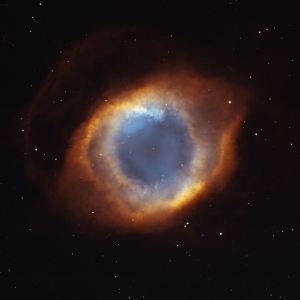
The Helix Nebula.
Choosing a cover-image for Odin’s Eye was an important step in the process of publishing the book, but I had to pick a title first, and the inspiration for that came from Norse mythology, and the stories about how Odin ended up with only one eye.
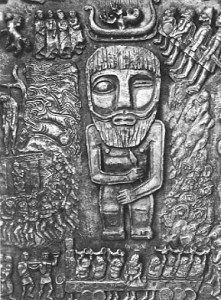
Odin the one-eyed on the bronze doors of Stockholm’s State Historical Museum
Odin was the All-Father, the Sky-god, the wise and sometimes wily king of Valhalla in the old Norse pantheon, and he was usually depicted with just one eye. The details on how he ended up like that differ slightly in different tales, but the gist of it is that Odin sacrificed his eye so that he could drink from a well of wisdom that was guarded by a powerful character called Mimir, or Mimer, or Mim.
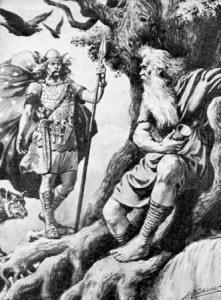
Odin approaches Mimir’s Well, Encyclopedia Britannica
To quote Snorre’s Edda, which talks about the ash tree Yggdrasil, the world tree:
But under the second root, which extends to the frost-giants, is the well of Mimer, wherein knowledge and wisdom are concealed. The owner of the well hight Mimer. He is full of wisdom, for he drinks from the well with the Gjallar-horn. Alfather once came there and asked for a drink from the well, but he did not get it before he left one of his eyes as a pledge.
Drinking from Mimir’s well gave Odin wisdom and the power to see into the past and into the future, even all the way to Ragnarök, the end of the world. But the price was that he had to maim himself, and leave his eye behind in the water. Fair trade? I guess Odin thought it was worth it.
Digging around in the “myth-files” to find a name for a science fiction book is nothing new in the world of literature, and the story of Odin’s eye and Mimir’s well just fits so effortlessly into the genre. Add the fact that there is an “eye-of-god-nebula” out there in the great big well of wisdom we call space, and it becomes simply irresistible.
To quote Snorre’s Edda once again:
So it is said in the Vala’s Prophecy: Well know I, Odin, Where you hid your eye: In the crystal-clear Well of Mimer.
If you’re up for a more detailed run-through of the story of Odin’s eye, check out my Q&A video:

March 23, 2015
Cover story: the Helix Nebula & “Odin’s Eye”
When I made the decision to publish my collection of short-stories as an ebook, I realized pretty quickly that I needed a good-looking cover. After a brief attempt at putting something together myself (NO!), I headed off into cyber-space looking for a professional to do the job for me. I ended up going to Caligraphics: a company that specializes in designing ebook covers. They did a great job, were priced right, and the turn-around was quick so I highly recommend them.
Before I got that far, though, I had already picked out an image I liked for the cover. After some brooding, I had settled on the title Odin’s Eye for the book (check out this video for the inspiration behind that), and shortly afterwards I came across a stunning image of the Helix Nebula at NASA’s website.
It was so perfect that I could hardly believe it. For quite obvious reasons, this particular nebula has been called “Eye of god”, or various variations on that name, and the image is so striking that I didn’t have to think twice about my choice.
The Helix Nebula, AKA NGC 7293, is located in the constellation Aquarius, and I’ll quote NASA when it comes to the specifics:
The Helix Nebula is the closest example of a planetary nebula created at the end of the life of a Sun-like star. The outer gasses of the star expelled into space appear from our vantage point as if we are looking down a helix. The remnant central stellar core, destined to become a white dwarf star, glows in light so energetic it causes the previously expelled gas to fluoresce. The Helix Nebula, given a technical designation of NGC 7293, lies about 650 light-years away towards the constellation of Aquarius and spans about 2.5 light-years.
Of course, the way the Helix Nebula looks on the cover of my book is only one possible way to “see” it. The image I chose is actually a composite of images from the Hubble Space Telescope, and wide-angle images from the telescope at Kitt Peak National Observatory. There are many other ways you could “see” this nebula as well, but no matter how it’s depicted, NGC 7293 remains a beautiful and singularly striking phenomenon.
In infrared:
In ultraviolet light:
Or a combination of the infrared and ultraviolet:
Finally, I’ll quote a very old book: Snorre’s Edda, because it echoes exactly what came into my mind when I saw that image of the Helix Nebula online for the first time:
Well know I, Odin,
Where you hid your eye:
In the crystal-clear
Well of Mimer.
All images via NASA.


